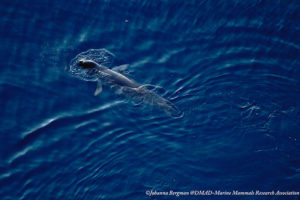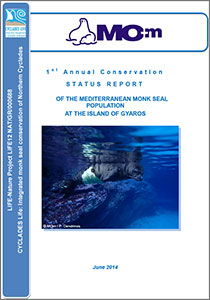by Aylin Akkaya Bas*, Nicola Piludu, João Lagoa and Elizabeth Atchoi, Marine Mammals Research Association, Antalya, Turkey**
Introduction
 Mediterranean monk seals (Hermann, 1779) were once widely and continuously distributed in the Mediterranean Sea, Black Sea and North Atlantic waters (Aguilar 1999). The species is considered to be one of the world’s most endangered pinnipeds, with the global population estimated to be around 500 individuals (Karamanlidis & Dendrinos 2015), only 50-100 of which are left in Turkey (Güçlüsoy et al. 2004; Öztürk et al. 1991). Antalya Bay is subjected to high marine traffic year-round, and especially during summer months, when tourism activities peak. We report the most recent sightings of Mediterranean monk seals in Antalya Bay and investigate the impact of boat traffic on the species. Considering that the population in the Turkish Mediterranean is estimated at around 40 individuals (Güçlüsoy et al., 2004), the recent sightings in Antalya are of vital importance for the knowledge of the overall Turkish population, and provide great insight for conservation plans and consequently for the species’ survival in the region. Continue reading “Recent sightings of the Mediterranean monk seal Monachus monachus and evaluation of anthropogenic activities with recommended conservation implications in Antalya Bay, Turkey”
Mediterranean monk seals (Hermann, 1779) were once widely and continuously distributed in the Mediterranean Sea, Black Sea and North Atlantic waters (Aguilar 1999). The species is considered to be one of the world’s most endangered pinnipeds, with the global population estimated to be around 500 individuals (Karamanlidis & Dendrinos 2015), only 50-100 of which are left in Turkey (Güçlüsoy et al. 2004; Öztürk et al. 1991). Antalya Bay is subjected to high marine traffic year-round, and especially during summer months, when tourism activities peak. We report the most recent sightings of Mediterranean monk seals in Antalya Bay and investigate the impact of boat traffic on the species. Considering that the population in the Turkish Mediterranean is estimated at around 40 individuals (Güçlüsoy et al., 2004), the recent sightings in Antalya are of vital importance for the knowledge of the overall Turkish population, and provide great insight for conservation plans and consequently for the species’ survival in the region. Continue reading “Recent sightings of the Mediterranean monk seal Monachus monachus and evaluation of anthropogenic activities with recommended conservation implications in Antalya Bay, Turkey”


